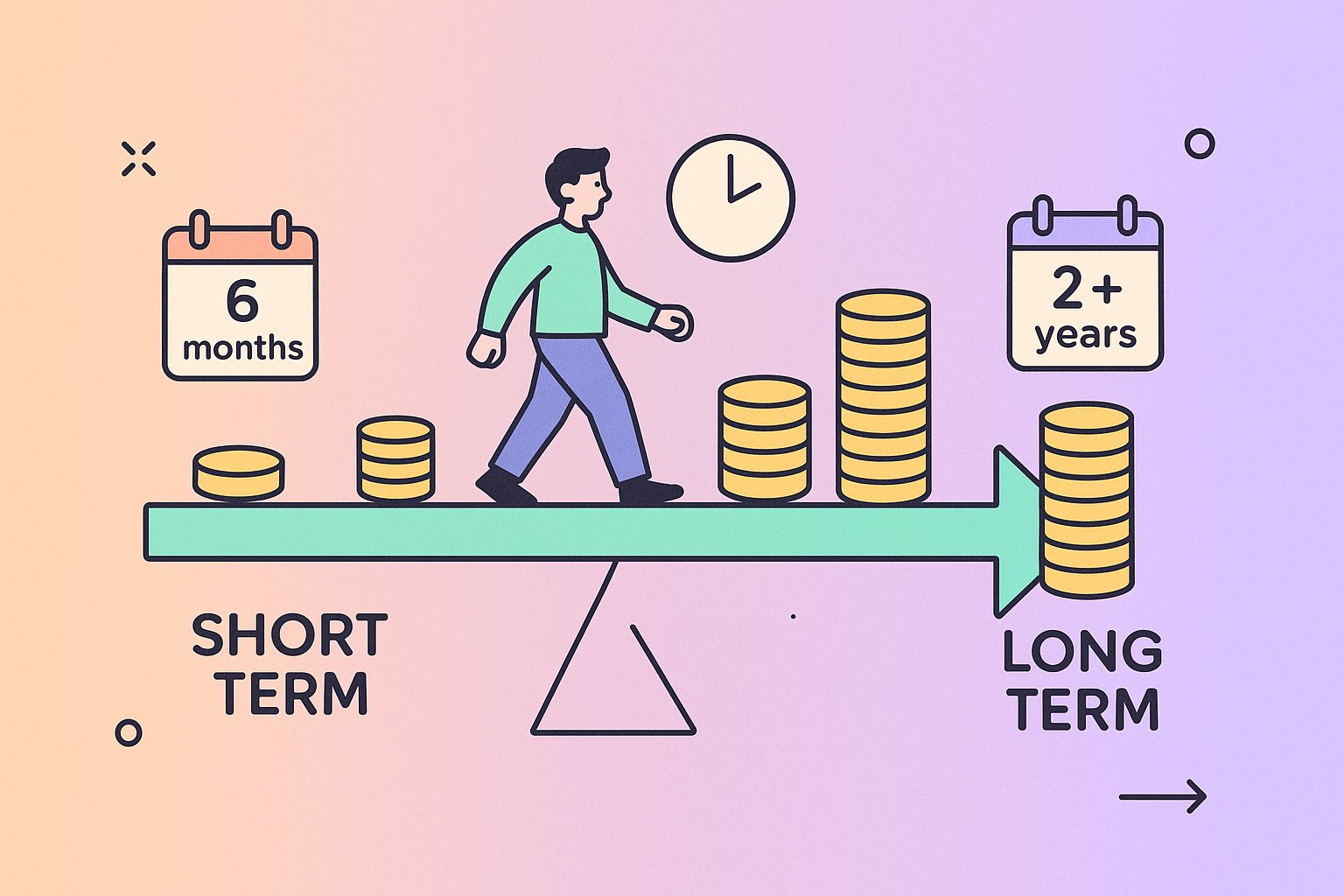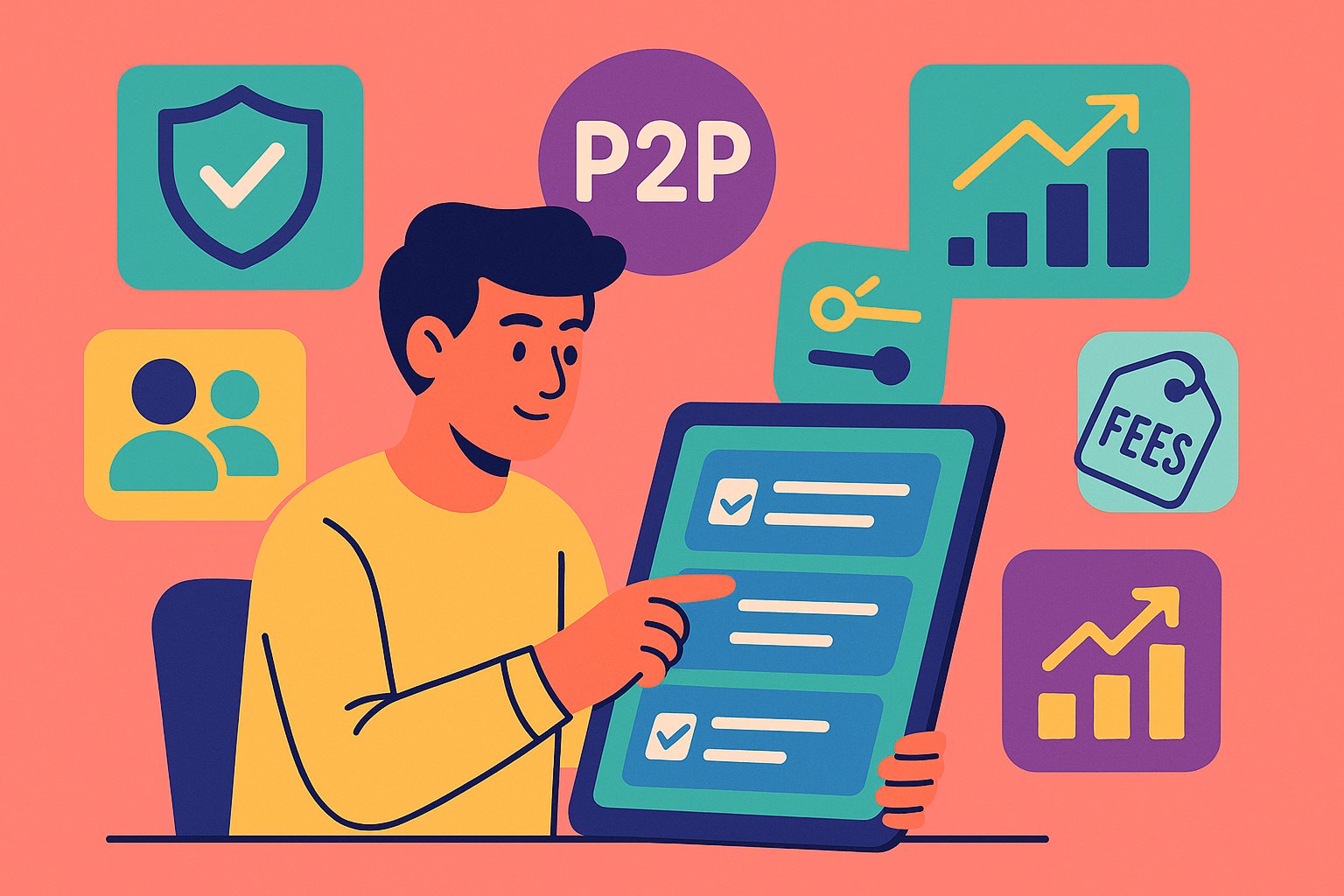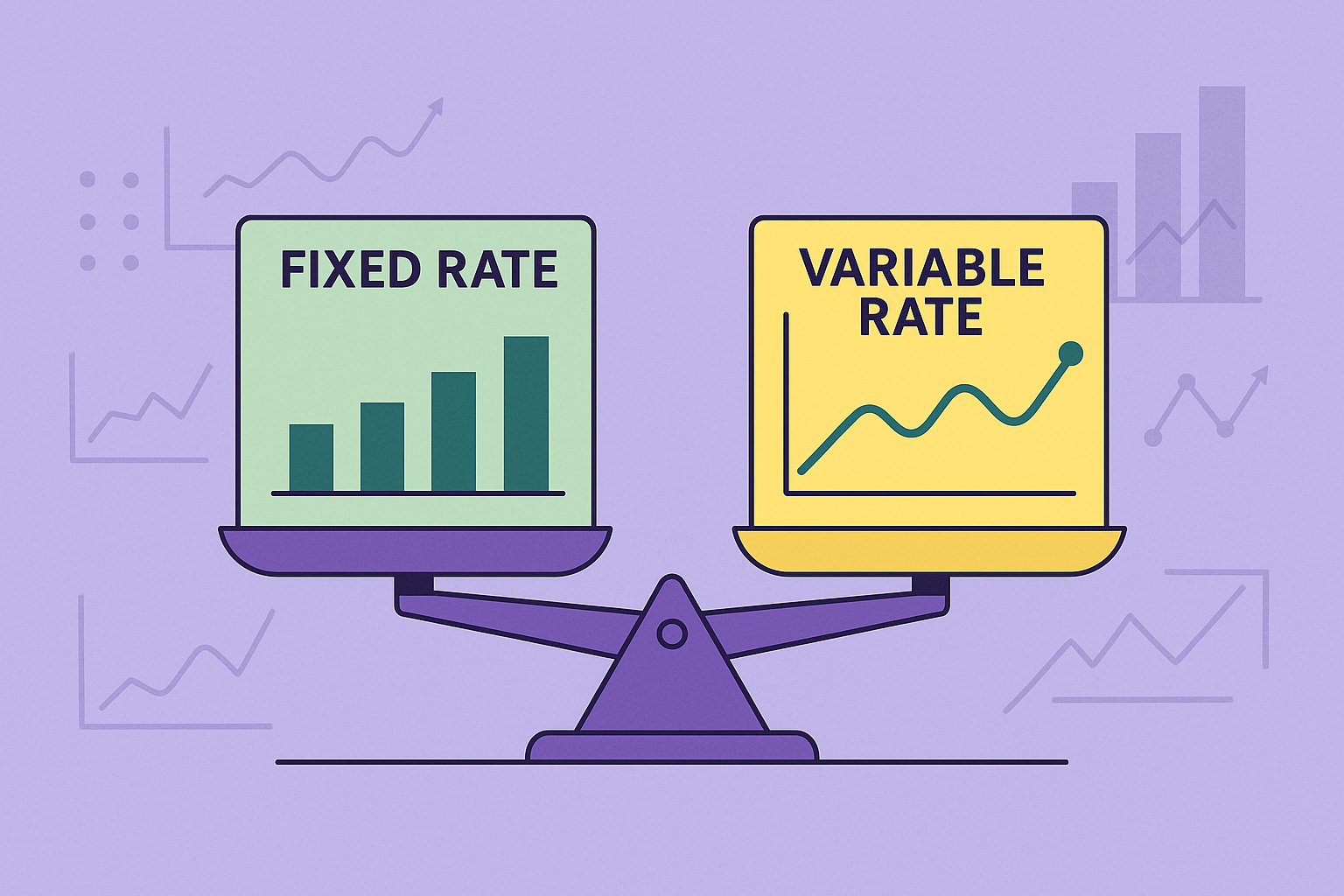The Significance of Loan Term Length in P2P Lending
When venturing into peer-to-peer (P2P) lending, many investors fixate on headline interest rates or the credit grades of borrowers. Yet one of the most influential, yet often overlooked, factors determining overall portfolio performance is loan term length. In simple terms, the length of time for which you commit your capital—whether it’s a brief six-month note or a multi-year obligation—can dramatically shape your returns, liquidity, and risk exposure. Understanding the nuanced ways that short-term and long-term P2P loans affect yields is essential for crafting a well-balanced, resilient investing strategy. In the following sections, we’ll explore the mechanics behind term length, examine real-world trade-offs, and highlight strategies to optimize your P2P portfolio around this critical variable.
Decoding Term Length Basics: What Shapes Loan Duration Choices
P2P platforms typically offer loans spanning a spectrum of durations, commonly ranging from three months to five years. Borrowers choose duration based on their cash-flow needs—someone consolidating credit card debt might opt for a 36-month note, while a small business seeking a quick equipment upgrade could select a six-month term. As an investor, you encounter this range when browsing loan listings, each note explicitly specifying its term length alongside an interest rate, credit grade, and other borrower details. Behind the scenes, term lengths are not arbitrary: platforms calibrate loan durations to align with borrower cash-flow forecasts, anticipated revenue trajectories, and seasonal demand cycles. Investors, then, must recognize that a loan’s life span sets a countdown on principal commitments and directly influences the manner in which interest accrues over time. At a fundamental level, shorter terms typically offer slightly lower rates due to reduced risk exposure, whereas longer commitments command premium yields to compensate for extended uncertainty. This interplay of supply and demand, risk and reward, forms the bedrock of term length dynamics in P2P marketplaces.
Short-Term Loans: Faster Turnover, Lower Yields, and Enhanced Liquidity
Short-term P2P loans—those that mature within six to twelve months—carry inherent appeal for investors who crave rapid capital turnover. When you fund a three- or six-month note, your principal returns more quickly, allowing you to reinvest in fresh opportunities or adjust allocations if market conditions shift. This liquidity advantage can be especially valuable during periods of rising interest rates; by quickly redeploying capital into newly minted loans with higher yields, you sidestep the “locked-in” scenario that afflicts long-term note holders. However, this nimbleness comes with a trade-off: short-duration loans typically offer lower interest rates than their longer counterparts. Because borrowers repay faster, investors face reduced default windows; the perceived risk is lower, so platforms price these notes at more modest APYs. For conservative investors seeking to preserve capital while earning a predictable return, short-term notes can form a stable core of a P2P portfolio. Yet chasing yield without considering longer durations can limit aggregate returns when higher-yield, longer-term loans dominate the marketplace.
Long-Term Notes: Higher Yields Accompanied by Extended Commitment
On the opposite end of the spectrum lie long-term P2P loans—often spanning 36 to 60 months. From an investor’s standpoint, these multi-year notes carry a heightened premium precisely because investors must commit capital for years, enduring any economic swings, borrower irregularities, or unforeseen market events. Consequently, platforms routinely attach higher interest rates to longer-duration notes, amplifying potential returns over the life of the investment. If you fund a five-year note at 10 percent, your projected earnings outpace what a comparable short-term loan might deliver. Yet locking in that capital for an extended period deprives you of the agility to chase rising rates or pivot when credit conditions change. Moreover, longer durations inherently harbor greater uncertainty around borrower repayment behavior: life circumstances shift, markets contract, and business revenues fluctuate. These evolving conditions can elevate default risks over time, making it crucial for investors to weigh the allure of a higher APR against the possibility of income interruption or principal loss halfway through a long-term loan’s schedule. Striking the right balance between maximizing yield and retaining flexibility becomes the central challenge when engaging with extended P2P terms.
Liquidity Considerations: Building a Laddered Term Structure
Given that short-term notes return principal rapidly while long-term notes can remain illiquid for years, discerning investors often deploy a laddered term structure—akin to bond ladders in traditional fixed income. By allocating capital across a spectrum of durations (for example, one-third in 6–12 month notes, one-third in 24–36 month notes, and one-third in 48–60 month notes), you craft a staggered maturity schedule. As each tranche matures, fresh capital becomes available for reinvestment, smoothing cash flows and reducing the risk that a sudden market shift leaves you saddled with below-market yields. Laddering also mitigates reinvestment risk: when a bulk of your portfolio matures simultaneously during a low-rate environment, you may struggle to recapture those lost yields. Conversely, a well-laddered structure ensures periodic reinvestment opportunities regardless of the prevailing rate cycle. While P2P platforms differ in how easily you can liquidate or sell notes on secondary markets, designing your portfolio with term length diversity empowers you to adapt to changing economic conditions without being forced to prematurely exit long-term positions at unfavorable prices.
Risk Dynamics Over Extended Durations: Default Patterns and Economic Cycles
Loan term length doesn’t simply affect liquidity—it also correlates strongly with default behavior. Historical performance data from most P2P platforms reveal that default rates tend to increase modestly with longer durations. A 12-month A-grade loan may carry a 1 percent historical default likelihood, whereas a 60-month A-grade loan might hover around 2 percent over five years. As borrower circumstances, interest rate environments, and macroeconomic factors evolve, the chance that payments slip at some point during a four- or five-year span grows. This phenomenon is particularly visible during economic downturns: long-term loans originated just before a recession can exhibit elevated delinquency spikes in year two or three as unemployment rises and consumer incomes tighten. By contrast, short-term loans funded within the same window may fully mature before the broader downturn intensifies, effectively sheltering investors from cascading default waves. Investors must therefore consider not only the nominal APR attached to each note but also the conditional probability of default over the loan’s duration. Factoring in historical default curves by term length allows for more realistic net return projections and helps calibrate prudent loan-to-value exposures.
Yield Curve Considerations: Capturing Term Premiums in a P2P Context
In traditional finance, the yield curve visually represents how interest rates increase with maturity. P2P platforms mirror this phenomenon: longer-term notes generally carry a “term premium,” offering investors a financial incentive to extend capital for extended periods. That premium often reflects market expectations—if investors anticipate higher rates in the future, they demand greater yield to lock in funds now. In a flat or inverted interest rate environment, the term premium narrows or even reverses, meaning short-term notes can rival or exceed the yields of some longer-term offerings. P2P investors who monitor platform-wide rate histograms can spot these shifts. When the term curve steepens—long-duration yields outpacing short-duration by three or four percentage points—locking into five-year notes might make sense for total return hunters willing to ride out potential cycles. Conversely, when the term curve flattens or inverts, favoring shorter-term notes allows investors to earn competitive yields without saddling up for a multi-year observed yield slump. Much like bond traders calibrate strategies based on the yield curve slope, savvy P2P lenders modulate term allocations in response to evolving platform-level rate structures.
Reinvestment Strategies: Managing Cash Flows Across Diverse Durations
Given that each P2P note’s cash flows vary according to term length and amortization schedules, investors must think carefully about how to redeploy principal when loans mature. Short-term notes return principal rapidly, offering frequent reinvestment opportunities. However, if market yields slump between maturation events, freshly available capital may face fewer high-quality investment prospects. On the other hand, long-term notes retain capital in higher-yield notes for several years, insulating investors from short-term rate fluctuations but limiting reinvestment potential. One approach to manage this dynamic is to direct a portion of the repayments from long-term notes immediately into short-term or intermediate-duration notes, effectively blending term lengths within your account. This strategy fosters a rolling stream of maturing principal and interest that can capture periodic market improvements without abandoning long-duration premiums entirely. For example, if a five-year note sends monthly amortized payments, you could earmark a fixed percentage of each payment to reinvest in short-term one-year notes, thereby maintaining liquidity while still enjoying a bulleted long-term commitment.
Balancing Portfolio Objectives: Income vs Growth Focus
Ultimately, the choice of term lengths in your P2P portfolio should reflect your broader investment objectives. If income generation is paramount—say, you rely on monthly interest payments as a cash-flow supplement—shorter- to intermediate-term loans can deliver predictable payment schedules. Borrowers on three- to twelve-month notes repay principal faster, enabling you to count on regular payback cycles and reinvest in new notes that maintain a steady income stream. Conversely, if you aim for long-term growth and can tolerate extended lock-ups, a blend of multi-year notes offers higher aggregate yields that compound over time. Although such a strategy sacrifices immediate liquidity, it also positions you to capture term premiums and ride out temporary market volatility. By assessing your own cash-flow needs, risk tolerance, and time horizon, you can craft a term-length tableau that maximizes either income stability or total return potential—or a balanced mix of both.
Practical Tips: Monitoring and Adjusting Term Allocations
In a dynamic P2P marketplace, static portfolios rarely remain optimal for long. Regularly reviewing performance metrics—such as weighted average term length, average yield to maturity, and portfolio duration—offers a snapshot of how your investments might fare if interest rates shift or economic headwinds intensify. Platforms often provide these analytics in their dashboard, allowing you to track how many loans each term bucket represents. If you notice an overconcentration in five-year notes and the broader term curve flattens, you may pivot by directing new capital into shorter-duration offerings. Alternatively, during steep yield curve environments, increasing long-term exposure slowly can lock in elevated premiums. It’s also wise to monitor broader economic indicators—such as central bank policy announcements or consumer confidence surveys—since these events can signal turning points that reshape default probability curves over different maturities. By treating term length as a dynamic lever rather than a “set it and forget it” dimension, you position yourself to adapt to changing market environments with agility and foresight.
Harnessing Term Length to Shape Your P2P Success
In peer-to-peer lending, loan term length is far more than a label on a borrower’s listing. It represents a powerful lever that influences your expected yields, portfolio liquidity, and risk exposure over time. Short-term notes offer flexibility and rapid reinvestment opportunities but often yield more modest returns. Long-term commitments deliver premium interest rates at the cost of prolonged capital lock-up and heightened default uncertainties. By combining varying durations within a laddered structure, monitoring yield curve dynamics, and aligning term allocations with your unique income or growth objectives, you craft a strategy poised to navigate the cyclical ebb and flow of both P2P platforms and broader economic currents. As you refine your approach, remember that no single term length reigns supreme; rather, the art lies in striking a harmonious balance that reflects your goals, risk tolerance, and the ever-shifting landscape of peer-to-peer lending.




